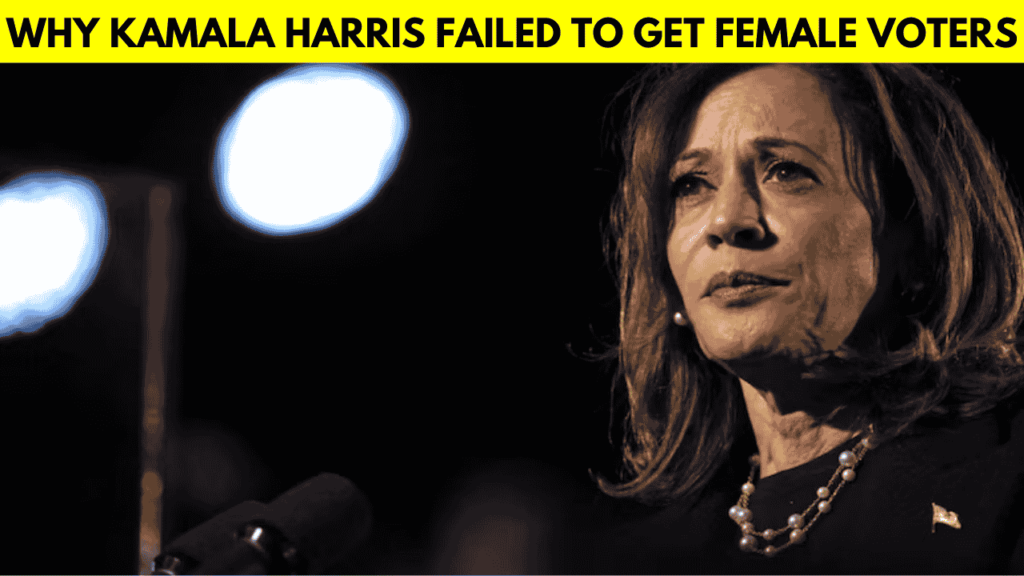Kamala Harris entered the presidential race with high hopes of securing strong support from female voters, especially with a campaign focused on key issues like abortion rights. Yet, despite her efforts, Harris’s support among women fell short of expectations. Exit polls conducted by CNN revealed she had only an eight-point lead among women voters, significantly less than Joe Biden’s 2020 advantage. This article examines the reasons behind Harris’s inability to connect with female voters as strongly as anticipated.

Harris’s Narrow Lead Among Women Voters
Despite her focus on issues like reproductive rights, Harris’s advantage with women voters was only eight points, nearly half of Joe Biden’s margin in 2020. On the contrary, Donald Trump widened his support among men, boasting a 13-point lead, up from his eight-point lead in 2020. According to Sabrina Karim, a professor at Cornell University, “women are not a monolithic group,” with their concerns and priorities being diverse and complex. Harris’s campaign, while resonating with certain groups, struggled to unite women across different demographics.
Demographic Divide: The Influence of Race and Ethnicity
The CNN exit poll showed varying support levels for Harris among women of different racial backgrounds. While she remained popular with Black women, Trump saw significant gains among white female voters. This demographic divide highlighted a key challenge for Harris’s campaign: addressing the diverse needs and priorities of female voters from different backgrounds. Professor Karim noted that the campaign’s heavy emphasis on abortion rights may have energized some women, but it was not enough to attract a broad coalition of women across racial lines.
Economic Concerns Outweigh Social Issues for Many Voters
Economic issues, especially inflation, played a major role in this election, particularly affecting women who manage household finances. For many families, the rising costs of basic goods and necessities have taken precedence over other issues. Tessa Bonet, a 51-year-old immigrant from Guyana and mother of five, cited the struggling economy as her primary reason for supporting Trump. “The economy for the past three-and-a-half years was bad,” Bonet explained at a Trump rally in New York. Many women, like Bonet, found themselves more drawn to Trump’s economic promises than to Harris’s social policy focus.
Identity Politics: A Missed Opportunity?
While Kamala Harris is the first woman of color on a major-party presidential ticket, her campaign avoided emphasizing her identity as a Black and South Asian woman. Instead, she relied on surrogates, including former First Lady Michelle Obama, Republican Liz Cheney, and celebrities like Beyoncé, to speak on her behalf. Despite these endorsements, many felt that Harris’s campaign did not effectively capitalize on her unique identity to rally support among women.
Some political analysts believe this lack of emphasis on her background may have impacted her appeal to a broader coalition of female voters. Notably, Trump’s campaign continued to use divisive and even derogatory language about Harris, yet his remarks did not seem to deter his base. His criticism ranged from sexist comments to questioning her mental capacity, underscoring the gendered dynamics at play.
Failed Campaign Strategies and Last-Minute Tactics
In the final days of the campaign, Harris’s team attempted a new tactic to sway conservative-leaning women to vote for her secretly, despite potential disagreements with their husbands. A campaign ad, narrated by actress Julia Roberts and funded by a progressive Christian group, depicted a woman covertly voting for Harris. While creatively executed, this strategy did not have the desired impact. Alex Keena, a professor of political science at Virginia Commonwealth University, referred to the tactic as “wishful thinking,” highlighting its failure to convert intended voters.
The Appeal of Trump’s Masculine Image
While Harris’s campaign struggled to appeal to female voters, Trump’s “masculine appeal” resonated with a diverse range of men and, increasingly, with some women. According to Karim, Trump’s persona and messaging have found appeal among various voter demographics, including Latino men, who shifted toward him in this election. This shift among Latinos contrasts with Biden’s stronger performance in 2020 with the same group, reflecting Trump’s broader base appeal in 2024.
Conclusion: Complex Dynamics in Voter Support
The 2024 election revealed the complexities in voter dynamics, particularly among women. Kamala Harris’s campaign, while successful in certain areas, fell short of building a diverse coalition among female voters. Economic concerns, racial and ethnic divides, and gender dynamics played key roles in shaping voter preferences. For Harris, this election underscores the need to engage with a wide range of voter concerns to create a broader, more inclusive base.
Follow Us for More Insight on American Leadership and Global Impact
Stay updated with the latest in American politics, leadership, and educational content, covering everything from elections and policy shifts to historical analysis.

